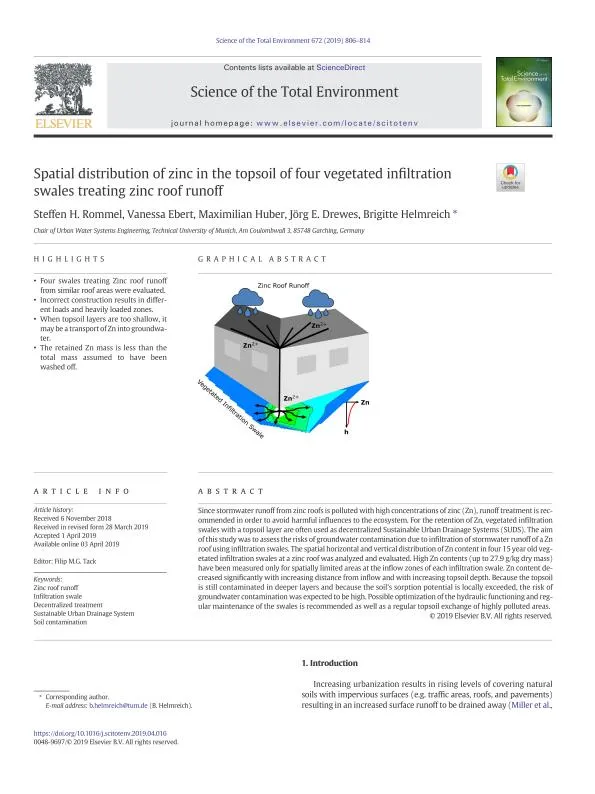Since stormwater runoff from zinc roofs is polluted with high concentrations of zinc (Zn), runoff treatment is recommended in order to avoid harmful influences to the ecosystem. For the retention of Zn, vegetated infiltration swales with a topsoil layer are often used as decentralized Sustainable Urban Drainage Systems (SUDS). The aim of this study was to assess the risks of groundwater contamination due to infiltration of stormwater runoff of a Zn roof using infiltration swales. The spatial horizontal and vertical distribution of Zn content in four 15 year old vegetated infiltration swales at a zinc roof was analyzed and evaluated. High Zn contents (up to 27.9 g/kg dry mass) have been measured only for spatially limited areas at the inflow zones of each infiltration swale. Zn content decreased significantly with increasing distance from inflow and with increasing topsoil depth. Because the topsoil is still contaminated in deeper layers and because the soil's sorption potential is locally exceeded, the risk of groundwater contamination was expected to be high. Possible optimization of the hydraulic functioning and regular maintenance of the swales is recommended as well as a regular topsoil exchange of highly polluted areas.
